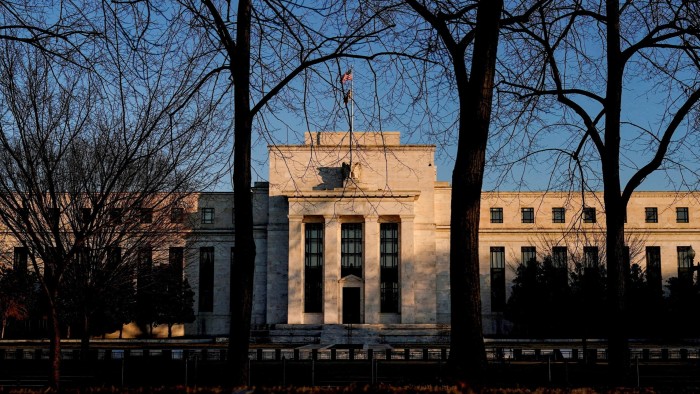Unlock the White House Watch newsletter for free
Your guide to what Trump’s second term means for Washington, business and the world
The Federal Reserve has kept US interest rates on hold for the third meeting in a row, as officials highlighted growing concerns that President Donald Trump’s tariffs will trigger a fresh burst of inflation and weaken the jobs market.
“Uncertainty about the economic outlook has increased further,” the policymaking Federal Open Market Committee said on Wednesday, after voting unanimously to keep the federal funds target at a range of between 4.25 and 4.5 per cent. The committee added that, since they last met in March, “the risks of higher unemployment and higher inflation have risen”.
Fed officials have not cut borrowing costs since December and have signalled that they will remain on pause as they assess the effects of Trump’s tariffs on the world’s biggest economy.
Several top central bankers have signalled in recent weeks that containing price pressures from the levies will be a top priority. This view has been bolstered by recent reports that showed the demand across the world’s largest economy broadly remained robust at the start of the year.
The Fed has maintained its patient approach despite repeated calls from the US president for it to cut borrowing costs. Trump has also launched attacks on chair Jay Powell, labelling him “Mr Too Late”.
The May decision followed the publication of stronger than expected non-farm payrolls figures for April, showing the US labour market remains on a solid footing despite the uncertainty triggered by the Trump administration’s trade policies.
The jobs figures led many economists to push back their expectations of the first Fed rate cut until September at the earliest.
Trump announced sweeping tariffs on April 2, which if enacted would raise US trade barriers to their highest levels in more than a century. Most were paused for 90 days a week later.
While GDP contracted for the first time in three years in the first quarter, officials put that down to distortions triggered by the tariffs as US businesses look to get ahead of the levies by importing goods.
Recommended
Powell will meet the press at 2.30pm Washington time, when he is expected to offer few clues on what comes next for US borrowing costs.
“Powell should keep saying what he’s been saying — that they just want to wait to see how this is going to unfold,” said Tom Porcelli, economist at PGIM Fixed Income. “There’s still way too much uncertainty around what the growth hit will be, what the inflation hit will be, and the timing at which this all happens.”
Porcelli added: “If he continues to drive that message home, I think he’ll walk away with a victory.”



